Can You Microwave Tupperware? (Microwave Safety Tips)
-
Pete Ortiz
- Last updated:
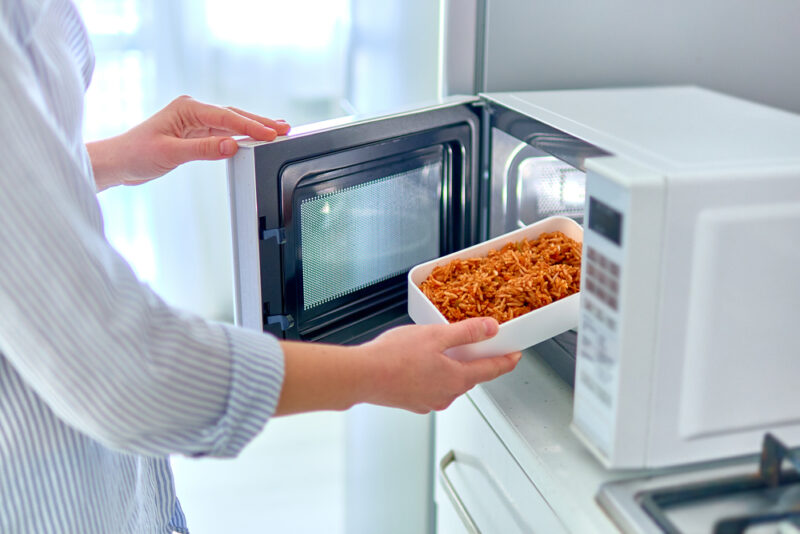
When you need to heat something quickly, the microwave oven is the perfect kitchen appliance to deliver quick meals. However, modern health science has taught us to be wary of the containers we use to reheat food, especially if that container is made of plastic. Now on the other hand, Tupperware is microwave-safe as the FDA approves it, is safe for contact with food, and is high temperature resistant.
However, there are a few factors to consider before propping these containers in a microwave, such as the labeling on your Tupperware, which indicates whether it’s microwave-safe. Let’s examine the characteristics of Tupperware containers that make them suitable food microwaving companions and instances when you should avoid them.
What Is Tupperware? Is It Microwave-Safe?
A line of plastic containers, Tupperware is a brand that’s synonymous with food safety, and as of 2010, it’s free from Bisphenol A or BPA and other phthalates. The brand’s been around since the end of World War II in 1945 when Earl Tupper created it.1
Tupperware is ideal for food storage since its design aims to reduce disposable plastic containers. They are easy to use and durable as they can withstand repeated use and still be food-safe.
Tupperware containers are available in various styles and colors and are typically microwave-, freezer-, and dishwasher-safe. An emblem indicates the brand features bowls and their seals, and the microwavable versions at the bottom. These depict a box with squiggly lines or the microwave picture.
Besides the high-quality material of Tupperware, the containers are durable, convenient to use, and easy to maintain, plus they come with a lifetime warranty. However, other than PET and polypropylene, some of this brand’s products are made using a third element, polycarbonate, as a protective finish.

What Is Bisphenol A and What’s All the Fuss About?
For over 40 years, plastic product manufacturers have used Bisphenol A or BPA as a hardener in making containers and can liners. Many people have been exposed to this toxic chemical, which impacts the nervous and endocrine systems, including the prostate gland, especially in small children and infants.
A new hardener, Bisphenol B, has since replaced BPA in food-grade containers, but research is ongoing to ascertain its absolute safety. Current research suggests that plastic made using BPB is safe for refrigerating, freezing, and microwaving food to an extent.
While it’s a common ingredient in manufacturing plastic cutlery, sippy cups, and bottles, polycarbonate leeches BPA into food. Bisphenol A is released slowly when such products are heated, which affects the reproductive system and causes diabetes, obesity, and hormonal irregularities.
But as of 2010, Tupperware eliminated BPA from its containers, meaning microwaving with their newer products is safe for your health. To ensure that you’re using Tupperware’s BPA-free versions, check for the safe-to-microwave symbol on the bottom side of each bowl.
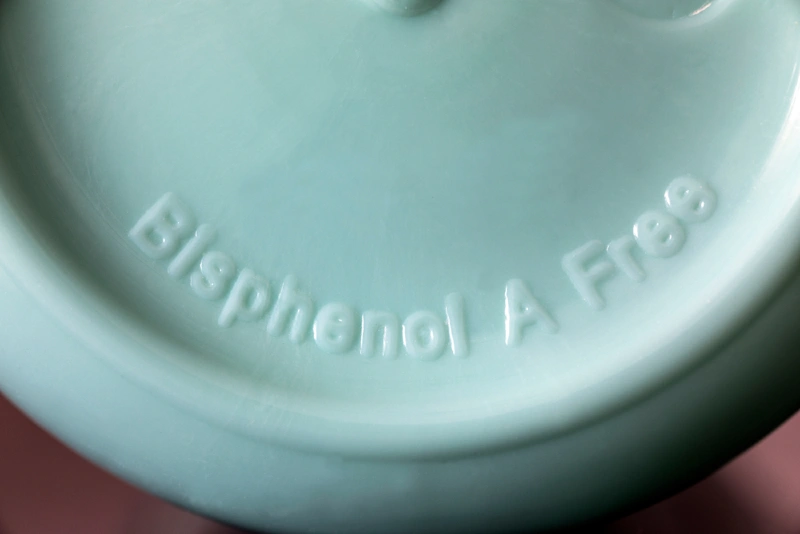
What Can You Do to Ensure Your Tupperware Stays Microwave Safe?
Using Tupperware containers to reheat your refrigerated meals or defrost frozen meats in a microwave is easy, convenient, and safe. But some risks come with very high temperatures that can melt plastics, scratched or broken bowls, and those manufactured before 2010.
Heat is the main culprit for letting BPA leach into your microwaved food, and as such, there’s a limit to how high your oven’s temperature should be when using Tupperware.
Tupperware ensures to include a resin ID code for all their plastic containers so that you’ll know which ones are safe to use in the microwave. You can verify safety by checking for indicators like the microwave-safe labels at the bottom of these bowls, including:
- A picture of a microwave oven with three wavy lines
- BPA-free or #5 to indicate it’s made with polypropylene
- CPET #1
All microwave-safe Tupperware products contain labels indicating what’s approved for microwaving, and you shouldn’t use one that doesn’t. While that doesn’t guarantee the container won’t leach BPA and toxic substances such as phthalates into your food, it suggests that the risks are lower with correct usage.
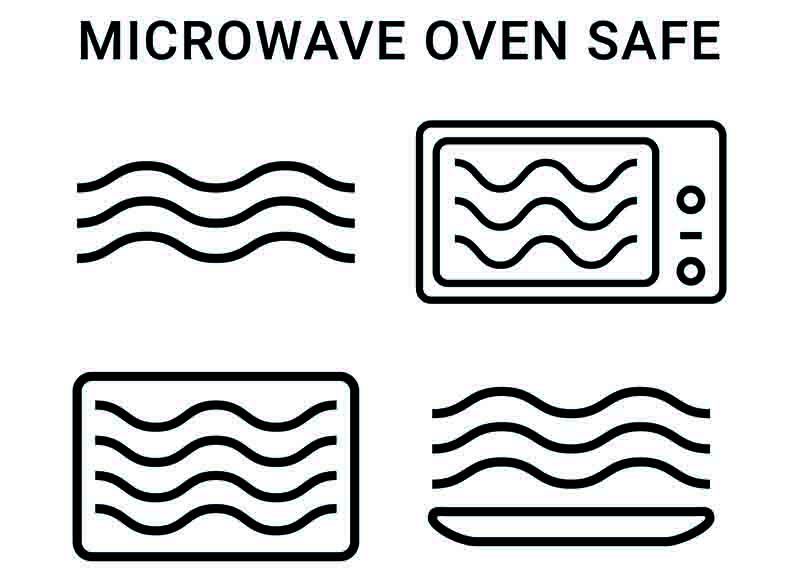
Besides ensuring that your Tupperware container is correctly labeled for microwave use, other things you can do to improve food safety include:
Keeping the Lid on But Allow Venting
Keeping the lid on your Tupperware container as you microwave ensures even faster heating as steam trapped within the bowl helps with warming food. However, there’s the danger of trapping significant pressure within, which can cause an explosion.
That’s why you should leave a gap for excess steam to escape to avoid accidents when microwaving with Tupperware containers. Cover the container lightly and allow for a crack of space if your bowl’s lid doesn’t have a venting system.
Lowering Your Microwave Heat and Time
Ensure your microwaving time is less than three minutes when using a microwave-safe Tupperware container. Stir the food well before you put it into the oven, and then repeat stirring after the recommended time elapses and then place it back, continuing until your meal is well heated.
The recommended temperature for reheating food is 165° F, which effectively kills microorganisms, but the amount of time depends on the wattage of your oven. Through constant stirring, you can ensure there aren’t any cold patches within your reheated meals, and you won’t exceed plastic-safe temperatures.
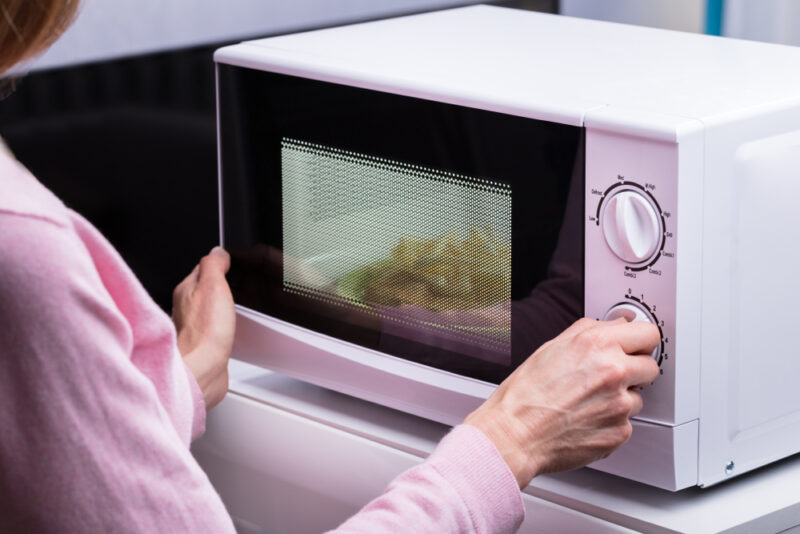
Selecting the Types of Food You Reheat
Foods with a lot of sugar and fat heat significantly faster than others, so you should lower the temperature and minimize timing on your microwave. That’s because, coupled with the extreme heat, you risk breaching the plastic material’s integrity even though it’s microwave-safe.
Also, break up the portions into smaller chunks if you’re reheating or thawing frozen food using a Tupperware container. That reduces the time needed for heating, ensuring that the plastic isn’t subjected to extreme temperatures, which increases the chances of leaching.
Adding Your Food Only Below the Fill Line
Tupperware containers have a fill line, as the brand’s manufacturer recommends, especially when using the microwave. Avoid exceeding this parameter as it ensures there’s enough space for steam and boiled-over food when it heats up, reducing pressure buildup.
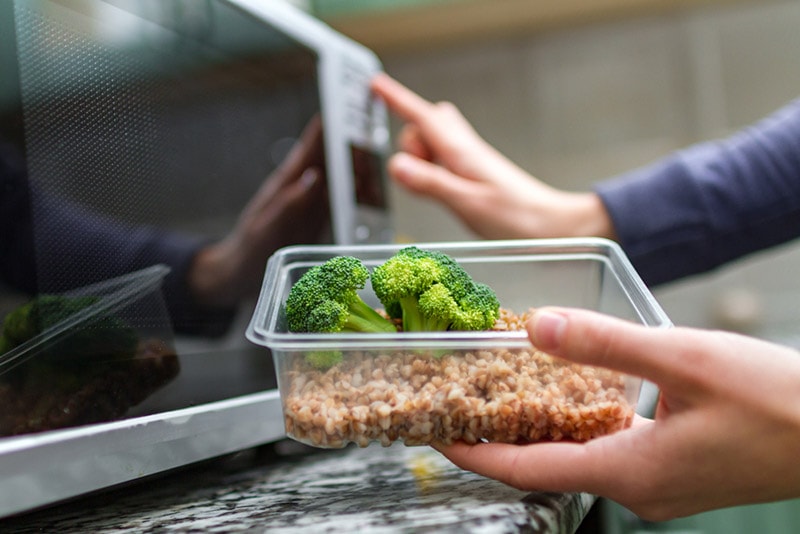
Avoiding Scratched or Cracked Tupperware Containers
One of the ways that Tupperware ensures toxic BPA doesn’t leach into your food when microwaving is by coating the container with a polycarbonate finish. However, that protective firm may become redundant if the bowl or its lid is excessively scratched, cracked, or broken.
Leaching occurs from the unprotected surface of a cracked, scratched, or broken Tupperware container, especially when microwaving at high temperatures. Avoid scrubbing your plastic utensils abrasively while washing, and replace the containers after prolonged use as the material degrades.
How Do You Microwave Food Using Tupperware Containers?
The Tupperware brand has various models of plastic containers designed purposely for the microwave and for which they guarantee 100% food safety. Not only do these bowls and dishes contain microwave-safe symbols, but they’re also matched with your heating procedures or foods you’re reheating.
- The Warmie Tup
- Pasta, Rice, Omelet microwave maker
- CrystalWave
- MicroGourmet
- MicroCook
- Tupperware Ultra Pro
- Micro Fast Cook
There are best practices that ensure perfect food reheating and container durability when microwaving meals using a microwave-safe Tupperware container. That includes cutting food into small pieces and arranging it evenly within these containers, which helps consume less heat and is time efficient.
If you’re adding syrups and sauces to your reheated food, make the additions at the last minute of your microwaving since these require less heat. When you microwave without the lid of your Tupperware, place the container on a plate or saucer to catch any spills.
Place the Tupperware container at least 6 inches from the microwave shelving and door to avoid disrupting the magnetron’s function. Once done, remove the bowl with oven mitts after reheating and open the bowl with the steam venting or space away from you.
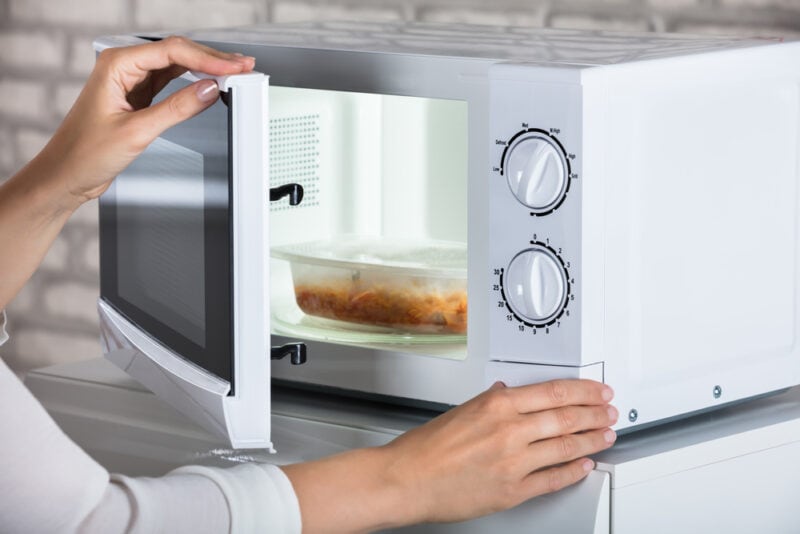
What Are the Safest Alternatives for Microwaving Food Besides Tupperware?
Plastics, especially if you suspect they contain phthalates and BPA, can cause leaching when exposed to heat, leading to various negative health implications. These toxic substances are known to disrupt endocrine functions, affect hormones and result in reproductive issues.
If you can avoid microwaving with Tupperware and other plastics, use glass or ceramic containers instead. These alternatives are safer as they’re non-reactive and microwave friendly, despite being heavier and pricier.
Glass and ceramic containers are also more durable, and as such, you can use them for significantly long periods without concern. For lids, whether you’re microwaving with Tupperware or not, use wax, parchment paper, or paper towels if you don’t have a non-reactive glass or ceramic cover.
Final Thoughts
Tupperware is designed to make your life easier, as you can store food in your fridge and then microwave it fast for a quick serving. The plastic material that makes these containers has been proven safe, versatile, and reliable, with minimal risks of BPA and phthalates.
You can microwave Tupperware as long as the container is indicated as microwave-safe, is not more than ten years old, and isn’t scratched, cracked, or broken. Replace your containers as soon as you notice any material degradation and ensure your microwave’s time and temperatures are on the low setting.
- Is Tupperware Made Before 2010 Safe for Microwaving?
- What Are the Negative Effects of BPA and Phthalates on Health?
- How Does Tupperware Make Their Plastic BPA and Phthalate Free for the Microwave?
- Symptoms of Conditions Caused By BPA or Phthalate Poisoning
- Is There a Limit to How Far a Tupperware Container Is Microwave-Safe?
Featured Image Credit: goffkein.pro, Shutterstock
Contents



